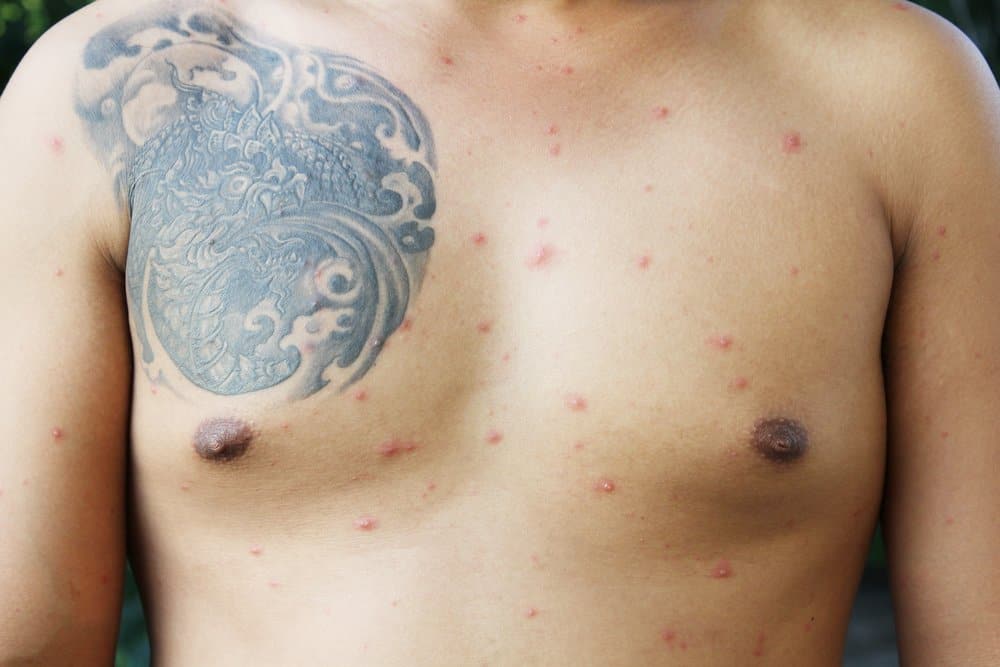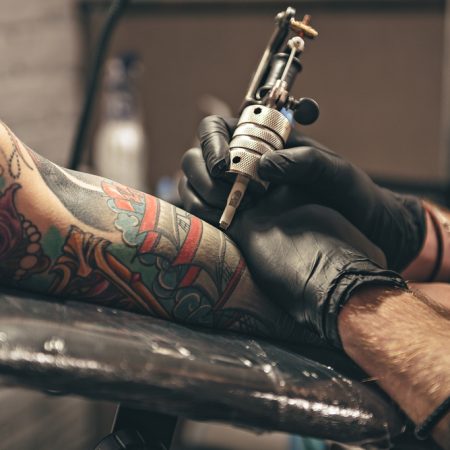Pimples can be a nuisance no matter where on your body they appear. However, if they emerge on your tattoo it can be especially irritating, and maybe even worrying. There are a few things you should know about pimples on a tattoo, and there are a few things you can do to address the issue, so read on and find out more.
- What Are the Causes of Pimples on a Tattoo?
- Will Pimples on a Tattoo Cause Damage to the Design?
- New Tattoos and Pimples – What Should I Know?
- What About Pimples on Old Tattoos?
- How Do I Treat Pimples on a Tattoo?
- Are the Pimples on My Tattoo Actually Pimples?
- Should I See a Doctor About Pimples on a Tattoo?
What Are the Causes of Pimples on a Tattoo?
You can’t deal with a breakout on your tattoo without knowing the cause behind it. There are several factors that can contribute to pimples on a tattoo:
- Clogged pores – this is the top reason for pimples on a tattoo. When the pores of the skin have too much oil and sebum build-up, it can draw dirt in. This problem can be addressed by exfoliating the skin gently and by keeping the area as clean as possible.
- Using excess aftercare products – while caring for your tattoo is very important, it’s important not to use too much oil or lotion. This can clog up your pores, and it can affect how quickly you recover. Never use any product that’s petroleum-based since these products have a consistency that is very thick and makes it hard for your skin to breathe. Choose products instead that have been specifically created to promote tattoo healing and only apply them as instructed by your tattoo artist.
- Allergic reactions – frequently rashes on the skin can be mistaken for pimples due to the small bumps that begin to appear on the surface of the skin. If you are experiencing fine pimples, this could be a sign of an allergic reaction. If your tattoo is new, you may be experiencing a reaction to the latex in the artist’s gloves, or to the petroleum jelly used when you were tattooed.
Will Pimples on a Tattoo Cause Damage to the Design?
Although many people worry that pimples will damage their new tattoo, the good news is that they’re unlikely to result in any lasting damage. However, if you don’t take care, you could find that the method you use for treating the pimples may disrupt the ink or put you more at risk of infection.
New Tattoos and Pimples – What Should I Know?
A new tattoo will always be more vulnerable to a spot breakout. Remember that a new piece of body art is an open wound, and therefore any bacteria that gets into it could cause irritation or breakouts.
We all know that you shouldn’t pop pimples, and if you pop a pimple on a new tattoo, you could find that you cause a lot more harm than you usually would. Scratching, picking, and popping pimples on a tattoo will expose you to extra bacteria, and even if you don’t develop an infection, it could displace the ink, causing faded and patchy spots in the design and possibly even scarring.
What About Pimples on Old Tattoos?
An old tattoo isn’t an open wound, but the skin there remains very delicate. Therefore, popping pimples even on an older tattoo isn’t a good idea. Even if the pimple is above the ink deposits, if you pick at it you could cause a visible scar, and infection may be possible.
How Do I Treat Pimples on a Tattoo?
Here are some top tips to help you treat pimples on a tattoo:
- Never pop, scratch or pick the area
- Use products that contain no additives or fragrances
- Gently rub the product into the skin using small circular motions, since scrubbing damages the skin
- Follow your tattoo artist’s aftercare instructions carefully
- Cleanse carefully to remove oil and dirt from the pores, but always use a fragrance-free moisturizer afterward to keep the skin hydrated and balanced
- Never use any acne-fighting product on a tattoo without speaking to the artist first. Salicylic acid may heal a pimple, but it could also damage the tattoo, leaving you with fading and spotty colors
Are the Pimples on My Tattoo Actually Pimples?

If the pimple on your tattoo hasn’t gone away in a couple of weeks, it might not be a pimple at all. A pimple-like bump could be caused by:
- Excess moisture – some tattoo artists recommend you use a thick moisturizer to protect your new tattoo. This is a good idea while the tattoo is healing, but once the skin is healed, you might not need a thick product anymore. Anyone with combination or oily skin may find they develop pimples if you put more moisture on your skin than it needs. These will usually clear up if you change to a thinner moisturizer once your tattoo has completely healed.
- Irritation – when the skin is irritated, the result can be pimple-like itchy red or pink clustered bumps. Climate change, insufficient moisture or chemical exposure can all cause irritation, but applying an aloe vera gel or oatmeal-based lotion will soothe the affected area.
- Allergies – the symptoms of allergies don’t stop at a runny nose and sneezing. Many people who suffer from allergies have skin problems. Very itchy, large, red lumps on the skin could be hives. These will be flat and will emerge in clusters. Dermatitis is also an allergic reaction and will present as a red and itchy rash. You can treat allergy symptoms with over-the-counter allergy medications.
- Infections – this is a more serious cause of pimple-like bumps on a tattoo. They are caused by bacteria and germs getting into the skin and the bloodstream. These bumps will swell and may be filled with pus. The skin surrounding them may be inflamed and red too. A doctor will need to treat your infected tattoo.
Should I See a Doctor About Pimples on a Tattoo?
If the pimples on your tattoo don’t go away after treating them at home, you may need to visit a dermatologist. Severe and widespread acne cysts may need you to take antibiotics. If you’re experiencing any sign of an infection you should see a doctor straight away. These include:
- Pus that comes from the tattooed skin
- An area of raised, hard tissue
- Swelling
- Waves of cold and heat
If you find that the ink is distorted due to picking the area, you can visit your tattoo artist again for a touch-up once the skin is completely healed.
